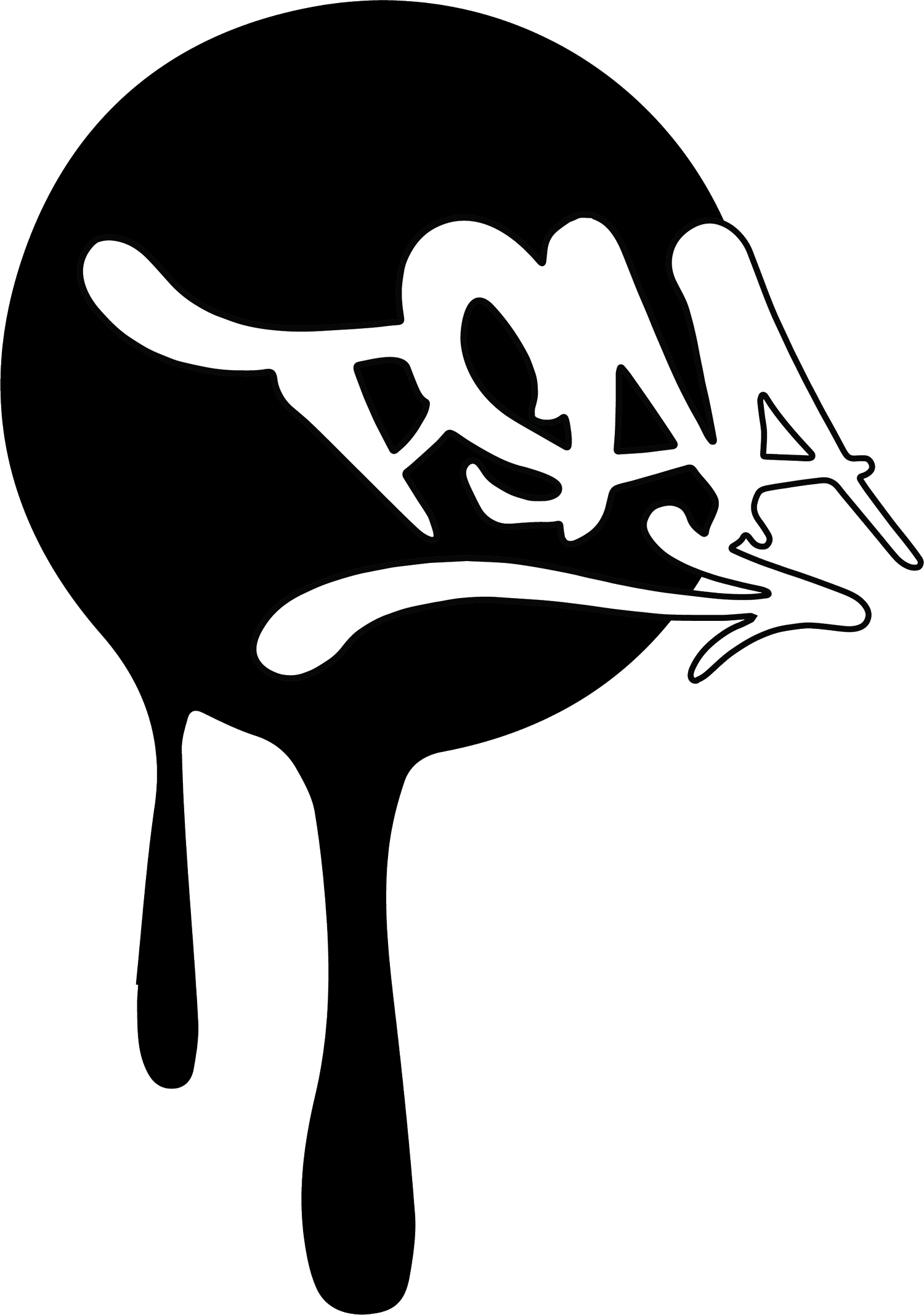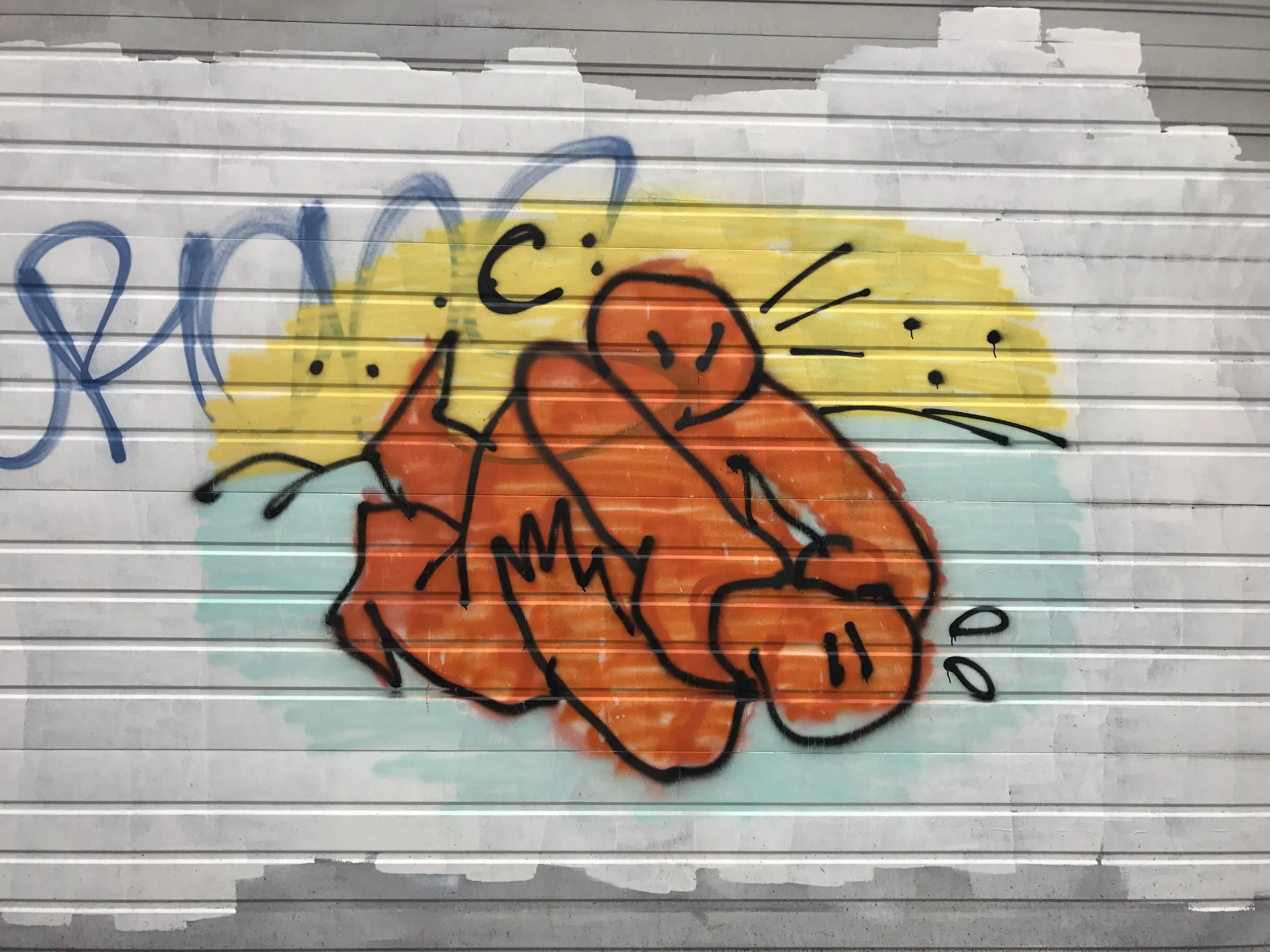Graffiti abatement “zero-tolerance” laws in the U.S. are primarily based on an outdated and unproven (perhaps even disproven) theory commonly referred to as “The Broken Window Theory.” This theory was first outlined in 1982 by two researchers, James Q. Wilson and George L. Kelling. The premise was that a place which looked like it was not being taken care of, and had things like broken windows and trash in them sends messages to criminals that the space is not regulated or controlled. This appearance of neglect would then attract all sorts of violent and quality of life crimes, descending the area into chaos. Even though Wilson and Kelling only very briefly mentioned graffiti as one of these “symbols of disorder,” the lasting effects of their idea on the criminalization of graffiti culture and our urban landscapes, with the patch work of buff we often see, can still be felt today across the country.
More recent research calls into question the legitimacy of the Broken Window Theory because of the lack of evidence supporting its validity; there is not a direct correlation between violent crimes and so-called quality of life crimes, such as graffiti. This broken windows and zero-tolerance reasoning is a common tool in cities to make a mostly harmless misdemeanor (like graffiti) into a felony.
Zero-tolerance graffiti policing had its origins in New York City during the Giuliani administration and then eventually spread across the U.S. Zero-tolerance approach to graffiti abatement in Portland can be traced back to Hugh McDowell, the City of POrtland’s Office of Community & Civic Life Graffiti Program’s ‘Prevention Coordinator’ in 1998 (prior to Marcia Dennis taking the reins).
McDowell drafted a detailed “Anti-Graffiti Strategy” which outlined Portland’s new zero-tolerance approach to graffiti. The City even tried to implement a "graffiti free" zone in inner industrial SE Portland, but that intense effort of course failed. This attempt was infamously mocked by the classic Portland film The Subconscious Art of Graffiti Removal (2001).
In the late 90s, Portland’s graffiti abatement efforts became more formalized and Graffiti Abatement and Removal moved from a sub-category under “Crime Prevention” in the department to a separate Service Level [program].
In 1998, the City of Portland also enacted the “Graffiti Nuisance Abatement Trust Fund” that helped gather city and business funding to support these increased graffiti abatement efforts. These funds went towards paying for the cost of graffiti removal, purchasing graffiti removal equipment and supplies, and for personnel to administer the new graffiti nuisance abatement ordinance.
The City of Portland’s new approach was outlined in this news article:
“Estimate the damage in 1998 at $2 million, much of it caused by 50 to 80 hard-core taggers. Fed up, city officials in August that year ratcheted up the city's response: They created a zero-tolerance zone in the Central Eastside Industrial Area, adopted a tougher anti-graffiti ordinance requiring swift cleanup, hired a full-time staff person to coordinate the city's $280,000 graffiti-abatement program and subtly put more pressure on police to nab the hard-to-catch criminals. Today, Mayor Vera Katz thinks it's working: Since 1997, the city's six-day-a-week graffiti cleanup crew has repainted more than 14,000 sites, and, in the past year alone, the city has investigated or prosecuted about 40 vandals. We aren't going to let up, Katz says. Oregon's 1997 repeat property-offender law means a minimum of 13 months in prison for the most serious vandals, and some states fight back even harder.”
In 2007, an increased effort to crackdown on graffiti resulted in the City of Portland adopting a new policy regulating "Graffiti Materials and Sales.” This policy is now commonplace in most large U.S. cities. Under this policy, if a store sells spray paint, aerosol tips/nozzles, paint pens, glass cutting, or etching tools they are required to verify the photo ID from purchasers and keep a log of specific information on products sold, including the name of the purchaser, their driver’s license or ID number, and address.
The store must also secure all graffiti materials to be inaccessible to purchasers without employee assistance (i.e., in a locked case, behind the checkout counter). Strangely, these types of laws act more as an annoying slight deterrent for two reasons. It is extremely unlikely and difficult (if not impossible) to prosecute someone, especially in a city, by connecting them to a graffiti crime with only spray paint purchasing evidence; graffiti artists need to be caught in the act or on camera. However, there are ways around these city ordinances. Today, companies like Montréal-based Bombing Science sell graffiti supplies worldwide online which only require a valid credit card.
The City of Portland also regulates graffiti in its landscape with the controversial “Graffiti Nuisance Property Code,” requiring all graffiti to be removed within 10 days after being reported. Essentially, any graffiti or street art reported to the City that does not have a city-issued mural permit or waiver, is required to be removed even if it was done with permission or the property owner. If a building is labeled as a “graffiti nuisance property” and the illicit art does not get buffed within 10 days, the property owner will receive a fine. On top of paying for the City’s buffing, the property owner could face a fine of $250 for each abatement instance. If the owner refuses to let the City on the property, the City Graffiti Abatement team may request a judge to issue a warrant to access the private property to remove the graffiti.
All it takes is one disgruntled or vigilante graffiti reporter for this cascade of events to happen. The City has no formal process for gauging the severity of the situation, the consensus of public opinion on the situation, or the possible community support for the art. For example, the ArtsBase controversy on Williams a few years ago.
Additionally, all of this graffiti removal and abatement is done in the name of “public safety and health; however, this “broken windows” mindset only represents one way of thinking about graffiti and how it operates in our cities. PSAA receives countless inquires from people wanting to see the best of Portland graffiti. Cities across the world use their vibrant graffiti culture as an asset in their tourist marketing efforts. Street art and graffiti events worldwide bring huge crowds. Furthermore, it is often said by the community that harsh measures to regulate graffiti only result in a proliferation of vandalism-like tagging, and suppress more artistic ventures, and the indoctrination of youth into traditional graffiti culture (that is at least bound by codes and pillars of respect).
We ask, whose public safety and health are these draconian graffiti removal efforts supporting? Surely not the people who actually live in these neighborhoods, who either choose to live there for their “gritty urban DIY feel,” and/or have much bigger safety and health concerns to grabble with (toxins in the earth and air, actual violent crime, rising cost of living, etc.). Cities across the country, including Portland, should reevaluate their priorities and focus on things that the vast majority of their populations are actually concerned about, and not spend precious tax dollars fighting an imaginary war on graffiti that will certainly never be won. No city in the history of human civilization has ever been “graffiti free,” nor will there ever be.


